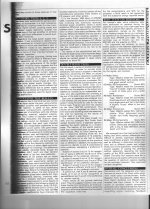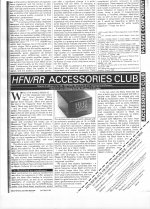DC applied through what another resistor and the battery. Directionality aside there is no, known to me, data that shows lumpy noise spectra from any resistor. I have been reading noise literature for 40yr.
Keeping with the theme, would a Makita battery be the right tool for the job?
Probably. The resistor is connected directly to the battery. Next run will include additional resistors. This is just playing to see if there is anything interesting to really look at. No claims other than it is interesting and worth some investigation.
It differs from the typical stereophonic setup with two channels as the sound sources are positioned at angles of 30 degree (ref.to the median plane).
As said above it depends on the frequency range, a pure low frequency sinus will most likely be per percepted at "dead center position".
The HRTF allows to extract directional information even in monoaural listening (one ear nearly deaf) if the frequency content is sufficient.
But the subgroup i´ve described seems to be unable to percept the phantom sound source (or virtual sound source)
Ok. Do you have any hint where I can find a paper on this? Do you remember if members of the subgroup are able to tell the position of a real life soundsource?
Probably. The resistor is connected directly to the battery. Next run will include additional resistors. This is just playing to see if there is anything interesting to really look at. No claims other than it is interesting and worth some investigation.
Are you measuring current noise? Resistor and battery alone has only two nodes.
Are you measuring current noise? Resistor and battery alone has only two nodes.
No I was being stupid and had the battery impedance shunting the noise!
Tomorrow I'll try it with isolation resistors.
Jeez, I've just spent $150 on ten 0.1% Vishay Z foil resistors for the RIAA of my phonostage, way to take the edge off the purchase you buzzkillers.
That said, I don't actually expect it to sound any different than with the 1% DALE RC60, but you've got to try these things once to dissuade yourself of these silly notions.
That said, I don't actually expect it to sound any different than with the 1% DALE RC60, but you've got to try these things once to dissuade yourself of these silly notions.
Just curious, what difference are you expecting to hear?Jeez, I've just spent $150 on ten 0.1% Vishay Z foil resistors for the RIAA of my phonostage,
If any at all, that is.
Care to post the schematic?
Thanks.
I would like to show what 'prime predators' like me, were looking at 30 years ago. Listening tests, even double blind, were implemented on occasion, even then. We cared then, and we care now. We find that open listening is the best available option for hearing subtle differences, even in the face of strong criticism as is shown on this thread. Take a look at the level we were researching 30 years ago. You might be surprised. And a few questions might be answered that are not yet here.
Attachments
john curl;4544092 And a few questions might be answered that are not yet here.[/QUOTE said:Like how did they get away with it?
Thanks John ! nice That I'm not the only ones that can hear Mc loading resistor 😀😀
Attachments
Last edited:
No I was being stupid and had the battery impedance shunting the noise!
Tomorrow I'll try it with isolation resistors.
In that case I find the positive results amusing to say the least.
Thanks John ! nice That I'm not the only ones that can hear Mc loading resistor 😀😀
At least you all imagine the same thing.
In that case I find the positive results amusing to say the least.
No having thought about it I think what is clearly being shown is the change in switch resistance from one position to the other.
Maybe I have something wrong. My understanding of things was that a soundwave travels to both ears
and depending on the time difference that wave hits the left and the right ear sensing of direction is possible.
There's more to it than that. The frequency balance is shifted when a sound arrives at various angles,
due to the outer ear structure and shadowing by the head.
A single sound source will thus present a different frequency balance to each ear when off center horizontally.
No having thought about it I think what is clearly being shown is the change in switch resistance from one position to the other.
At least we're even now.
At least we're even now.
The best way to avoid making mistakes is to do nothing. So I'll just have to continue to make misteaks.
The best way to avoid making mistakes is to do nothing. So I'll just have to continue to make misteaks.

- Status
- Not open for further replies.
- Home
- Member Areas
- The Lounge
- Resistor Sound Quality?


